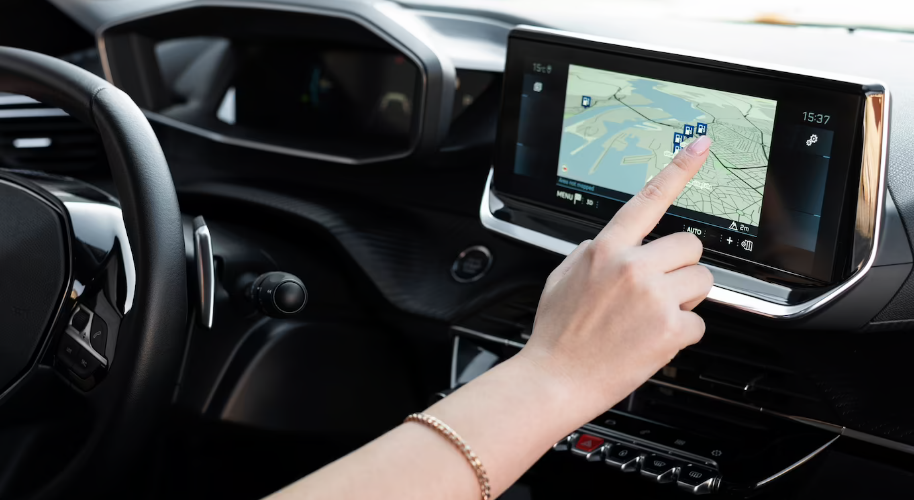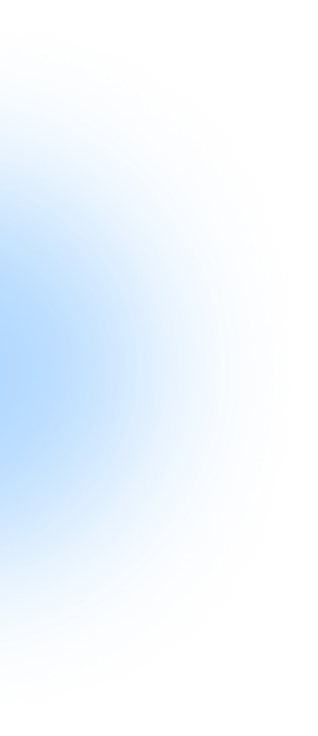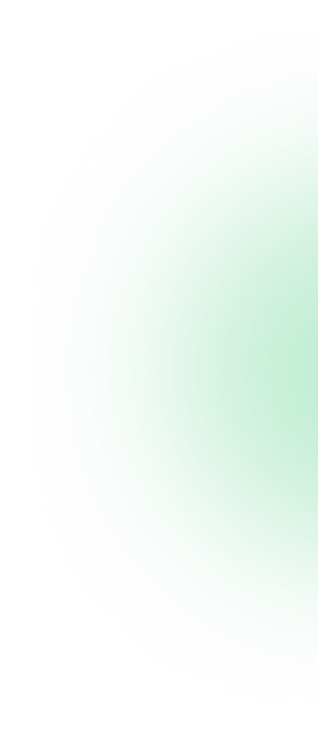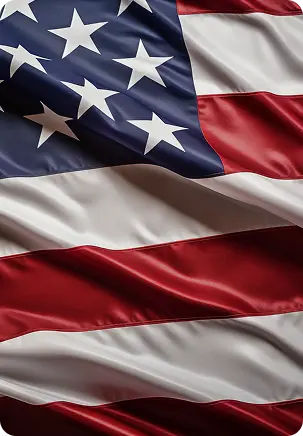-
The IoT Fleet Management market is growing rapidly and is expected to grow.
-
It is estimated that the global market for IoT Fleet Management will reach $22.8 billion in 2026 from $7.6 billion in 2021. This growth will be at a CAGR of 24.5% over the forecast period.
-
This graph shows the global market for fleet management in 2017 and 2022. The global market for fleet systems is expected to reach 30 billion U.S. Dollars by 2022.
![Dev Technosys]()
-
Market growth is driven by the increasing adoption of IoT technology and the demand for efficient fleet operation.
-
The IoT fleet market is dominated by real-time solutions for tracking, monitoring and managing vehicles.
-
The IoT Fleet Management market is growing due to the rise of connected vehicles, intelligent infrastructure and other smart transportation systems.
-
Transport and logistics is one of the major users of IoT Fleet Management solutions. It helps optimize route planning and fuel efficiency.
-
North America is the fleet management IoT market leader, followed closely by Europe. It is due to the technologically advanced infrastructure of North America and the higher adoption of IoT Solutions.
Dev Technosys offers expert dedicated developers under a flexible Time and Material model to turn your vision into powerful, scalable digital solutions
Welcome aboard the fast lane to IoT Fleet Management!
Buckle up and get ready to embark on an exhilarating journey through the connected world of vehicles. In this ultimate guide, we'll navigate the intricacies of harnessing the power of the Internet of Things (IoT) to revolutionize fleet management.
From optimizing operations to enhancing efficiency, we'll uncover the secrets of transforming your fleet into a well-oiled, data-driven machine. We'll decode the complexities of real-time tracking, predictive maintenance, and intelligent routing, empowering you to make informed decisions that boost productivity and reduce costs.
So, whether you're a fleet manager seeking to streamline operations or a curious techie intrigued by the wonders of IoT, fasten your seatbelts and let's unlock the future of fleet management together!
Market Stats on IoT Fleet Management
10 IoT Fleet Management Software
Here's a list of 10 IoT fleet management software solutions along with their platforms and a brief description:
| Software Name | Platform | Description |
|---|---|---|
| Geotab | Web, Mobile | Comprehensive fleet management with real-time data. |
| Verizon Connect | Web, Mobile | Fleet tracking, route optimization, and diagnostics. |
| Samsara | Web, Mobile | Real-time GPS, ELD compliance, and asset tracking. |
| Fleet Complete | Web, Mobile | Fleet tracking, maintenance, and dispatch solutions. |
| Teletrac Navman | Web, Mobile | Fleet management and compliance solutions. |
| Omnitracs | Web, Mobile | Fleet management and logistics optimization. |
| KeepTruckin | Web, Mobile | ELD compliance, fleet tracking, and safety features. |
| GPS Insight | Web, Mobile | Vehicle tracking and management solutions. |
| TomTom Telematics | Web, Mobile | Real-time vehicle tracking and optimization. |
| CalAmp | Web, Mobile | Telematics solutions for fleet visibility and control. |
What Are IoT-Based Fleet Management and Telematics Systems?
IoT enables fleet managers, logistic operators and drivers to make informed decisions quickly. Taking advantage of data collected at the edge, or collecting and analyzing it in real time generated, makes this possible. The vehicle is connected to the cloud and fleet manager via IoT-enabled devices with built-in processors.
Edge-enabled IoT Telematics Solutions, for example, can collect, store and analyze data on vehicle and road conditions using GPS technology, AI-enabled computer vision technologies, and onboard diagnosis.
Fleet managers and owners can use this data to monitor driver performance, vehicle maintenance and cargo management.
Moreover, data collected can be uploaded into the cloud to allow for global access, analysis and trend identification, and predictive projections. This information transparency can be used to enhance operations, manageability and sustainability.
The following are some examples of IoT-enabled telematics in fleet management:
-
Fleet predictive maintenance
-
Asset and cargo management optimization
-
External and internal vehicle monitoring for theft prevention, cargo security and tracking
-
Fuel management
-
Safety and driving behaviour
-
Safety and security of passengers during onboarding
-
Passenger counting and ticketing
-
Risk management
-
Waste reduction
-
Route planning
-
Service efficiency
-
Work zone analytics
-
Road Asset Management
How Does The IoT Fleet Management System Work?
The adoption of IoT brings several benefits. From fuel management to GPS tracking in vehicles, IoT offers many advantages. It requires a stable infrastructure for it to work smoothly. Fleet owners and fleet IoT providers should consider the following before implementing IoT.
Here are some of the main benefits that IoT can bring to fleet management.
-
Standards for compatibility and scaling.
-
Connect to the cellular network via 2G, 3G and 4G/LTE.
-
Equip vehicles or other transport modes with sensors and wireless technologies.
The typical IoT Fleet Management System does the following:
-
Data Collection and Filtering:
IoT Big Data Solutions can collect an enormous amount of data. Data related to IoT fleet management, for example, may include:
- Vehicle location and speed at idle
- Driver behaviour
- Monitoring data for fuel, load, temperature and fuel.
GPS and OBD II sensors are used to collect vehicle data. The sensors transmit data via mobile data while the vehicle is moving. The gateway collects data on speed, direction, location and other variables and sends it to a cloud-based application server.
The fleet management app server sends warnings and reports about driving and the safety of vehicles to the mobile phones of the driver or boss.
-
Data Transfer:
For cloud storage or other devices, data is gathered and transmitted over the Internet. The user has a choice in the communication medium. There are several other ways to communicate, including WiFi, NFC, Bluetooth, RFID, GSM, and LoRaWAN.
-
Analytical Execution
Artificial intelligence is used to process IoT data. On a single screen, comprehensive information about drivers' compliance with laws, driving modes, speeding, idling or other factors is visualised and analysed.
-
Take Action
The last step, telematics fleet management solutions, will determine the actions an automated or human takes based on collected data. When a sensor warns that the temperature is too low, an air conditioner will take immediate action to stabilize the situation.
The Benefits of Using a Fleet Management System Based on IoT
IoT expands the possibilities for intelligent fleet management by connecting vehicles. This technology combines telecommunications and informatics to collect and transmit actionable real-time data between dispatchers and drivers.
Here are some of the main benefits that IoT can bring to fleet management.
-
Tracking Fleet Vehicles And Assets Remotely
IoT and Telematics allow fleet operators to constantly track the location of vehicles and assets. It is a great way to ensure the safety of drivers, cargo and timely deliveries.
-
Automated Notifications To Enhance Responsiveness
Smart fleet management software automates notifications to all vehicles connected. It would include alerts for weather-related traffic disruptions and congestion. Smart vehicles can also alert nearby service stations if they experience an unexpected engine failure or a car accident.
-
Operational Efficiency
IoT app development is an ecosystem in which data can be accessed anywhere, anytime. It connects disparate technologies like big data analytics, cloud computing, and others. Evaluating fleet performance and making quick decisions with a centralized view is much easier.
-
Optimized Engine Performance & Fuel Efficiency
Digital tachographs and IoT-enabled truck systems provide accurate reporting. It would include total distance, idling and average speed. This information helps optimize routes, reduce fuel consumption and extend the life of vehicles.
-
Big Data Analytics Can Improve Decision-Making
Data is king! Smart fleet tracking solutions powered by IoT comprehensively analyze routes, driving habits, delivery times and other relevant insights. It allows freight and transport businesses to optimize enterprise-wide resources and functions while maintaining the safety of drivers, fleet vehicles and support staff.
-
Predictive Maintenance
Smart trucks have an Onboard Diagnostics Port (OBD) connected to IoT devices and generate actionable reports. Fleet managers can receive alerts about early engine malfunctions and obtain vital data remotely. The latest version, OBD-II, supports predictive maintenance to avoid unexpected failures or costly downtime.
-
Service Calls Streamlined
Technicians can better prepare with the appropriate tools and promptly replace the problem thanks to actionable data from IoT. Employees can speed up repairs, increase first-time fix rates, and decrease unscheduled downtime. These advantages are crucial for fleet management.
IoT Fleet Management Use cases
A device powered by IoT means reliable and fast connectivity through a powerful gateway. Here are a few examples of how IoT can improve fleet operations.
-
Driver Management
Drivers are alerted by high-end driver systems equipped with backup cameras, blind-spot assist and other features. The object blocking the road, the person crossing the street, or the rash driving of vehicles are all factors. The in-cabin camera system also alerts and encourages drivers to rest and stop.
In an accident, video data can be used to detect faults. Computer vision-based driver management solutions can help monitor drivers for fatigue and distraction. These applications can alert the nearest control centre of the driver's state in real-time.
-
Fleet Maintenance is Important
Sensors built into the vehicle can detect when to rotate tires, change brake pads and oil, or replace batteries. The crew can address any problem well in advance. It also reduces costs through the detection & prevention of damaged motors, old and dead batteries, malfunctioning brakes & less tractable tires.
A predictive maintenance platform allows multiple workloads to run simultaneously while providing access to sensors and cameras. By combining workloads, fleet managers can deploy applications seamlessly to reduce service costs.
This maintenance helps improve fuel efficiency, lowering costs. The data collected from the fleet will be stored in the cloud. Data is processed using different analytics and conceptualized into a visual format. It allows fleet operators to access data easily to monitor different parameters associated with vehicles.
-
Vehicle Monitoring
Vehicle monitoring is an important use case for IoT fleet managers. Fleet operators can monitor vehicles remotely in real-time by integrating sensors and connectivity. It includes the tracking of location, speed and fuel consumption.
Vehicle monitoring allows for proactive maintenance and improves fuel economy, driver safety, and operational efficiency. Fleet managers can use iot fleet management solutions to make data-driven decisions, optimize routes and reduce costs.
-
Asset and Cargo Management
In logistics and supply chains, IoT, telematics, and supply chains are crucial. Transport businesses can assure the security of the cargo with the use of sensors installed in it. It has sensors for vibration, surveillance, and constant temperature management.
IoT also aids in protecting a vehicle's cargo from damage. By establishing temperature norms, they keep food, medicine, vaccines, and other perishable commodities fresh and consumable.
The cargo surveillance enables evaluation of the interior and exterior of the vehicle. Operators can examine the contents and the sequence of the truck. Additionally, this monitoring reveals whether any goods have been taken or lost. Fragile items are kept safe by the vibration sensors, which stop them from shattering while being transported.
-
Passenger Information
IoT integration helps public transport passengers to get real-time updates on services, routes, and fares. Also, they can be informed about rules and provided with value-added services such as WiFi connectivity and paperless ticketing.
Video cameras help bus operators collect data on passengers, infractions and other regulations. Many business using IoT solutions for fleet management to increase productivity.
Step By Step Guide To Build IoT Fleet Management Software
IoT fleet management software empowers businesses to efficiently monitor, manage, and optimize their vehicle fleets through real-time data, intelligent insights, and software development services. Here's a step-by-step guide to help you create your own IoT fleet management software:
-
Step 1: Define Requirements and Objectives
Start by identifying the core features and functionalities your IoT fleet management software must have. Consider factors like GPS tracking, vehicle health monitoring, fuel efficiency analysis, driver behavior assessment, and reporting capabilities.
Clearly outline your objectives, such as improving fleet utilization, reducing operational costs, and enhancing overall safety.
-
Step 2: Choose Hardware and Connectivity
Select the appropriate IoT hardware for your fleet vehicles. This may include GPS trackers, OBD-II dongles, sensors for monitoring temperature, tire pressure, etc. Ensure compatibility with your chosen connectivity options, such as cellular networks, LoRaWAN, or NB-IoT, to transmit real-time data from vehicles to your software platform.
-
Step 3: Develop Software Platform
Build a robust software platform, including mobile app development services, to manage and analyze the incoming fleet data. Choose a suitable programming language and development framework.
Design a user-friendly interface for administrators and drivers. Develop features for real-time tracking, route optimization, vehicle diagnostics, maintenance scheduling, and driver performance monitoring.
-
Step 4: Implement Data Processing and Analysis
Set up a data processing pipeline to handle the influx of data from your fleet. Use cloud-based solutions for scalability and flexibility. Implement data storage, cleansing, and aggregation processes. Apply data analytics techniques to extract meaningful insights, such as fuel consumption patterns, maintenance trends, and driver behavior.
-
Step 5: Ensure Security and Compliance
Prioritize data security and compliance with privacy regulations and warehouse management system. Implement encryption protocols to safeguard data transmission and storage. Authenticate and authorize users based on their roles.
Regularly audit your software for vulnerabilities and perform penetration testing. Adhere to relevant data protection laws, such as GDPR or CCPA, to maintain customer trust.
-
Step 6: Integration and Deployment
Integrate your IoT fleet management software with other systems your business uses, such as ERP or CRM software. Ensure seamless data exchange between platforms. Pilot-test the software with a subset of your fleet to identify any issues. Once validated, deploy the software across your entire fleet and provide training to users.
By following these six steps, you'll be well on your way to creating a comprehensive IoT fleet management software solution with the help of Automotive App Maintenance Services. Remember to continuously monitor and update your software to adapt to evolving technologies and business needs.
Technologies Used in IoT Fleet Management Software
IoT fleet management software uses various technologies to monitor and manage fleets of assets or vehicles. IoT fleet management software uses several key technologies.
-
IoT Connectivity
IoT fleet management relies upon connectivity to collect data from devices and sensors installed on vehicles or assets. Technologies such as cellular networks (4G/5G), WiFi, and LPWAN (Low Power Wide Area Network) can be used for reliable connectivity.
-
Telematics
Telematics combines telecommunications, informatics, and vehicle data transmission over long distances. Onboard diagnostics devices (OBD) or embedded sensors collect data about vehicle location, speed and mileage.
-
GPS (Global Positioning System)
GPS technology is a key component of enterprise fleet management software. It allows fleet managers to track and geolocate vehicles and assets in real-time and monitor their routes and schedules.
-
Cloud Computing
Cloud computing is often used to store, analyze, and process vast fleet data. Cloud-based platforms offer secure data storage, real-time access to information and scalability. They can also be integrated with other applications or systems.
-
Data Analytics
IoT Fleet Management Software uses data analytics to gain valuable insights from collected data. These techniques include predictive analytics, machine learning, and statistical analyses to optimize vehicle performance, fuel efficiency and route planning.
-
Mobile Applications
Fleet managers and drivers can access fleet management systems on the go with mobile apps. These apps help with dispatching, driver communication, real-time monitoring and reporting. These fleet management development are usually compatible with iOS and Android devices.
-
Vehicle-to-Vehicle (V2V) and Vehicle-to-Infrastructure (V2I) Communication
Some advanced IoT Fleet Management Systems use V2V and I2I communication technology. These technologies allow vehicles to exchange information with one another and with infrastructure components like traffic signals or road sensors. It improves safety, optimizes routes and increases overall efficiency.
-
Sensor Technologies
To gather relevant data, various sensors are installed in vehicles. Sensors can monitor fuel levels, tire pressure, temperature, pressure, accelerometers, tire pressure monitoring system (TPMS), and other conditions. These sensors provide real-time information on vehicle health, environmental conditions and more.
-
Edge Computing
Edge computing uses edge processing to analyze and process data closer to the data source instead of relying on cloud-based processing. It allows for real-time decisions, reduced latency and efficient network resource utilization in IoT Fleet Management systems.
How To Find The Best IoT Fleet Management Solutions?
Dev Technosys is a leading IoT software development company specialized in developing the best IoT Fleet Management Software solutions. We specialize in creating customized solutions to meet the specific needs of fleet management. We leverage the latest IoT technology with domain experts and developers to create robust, scalable solutions.
Our software offers real-time tracking, remote monitoring capabilities, predictive maintenance, and advanced analytics. It allows you to optimize fleet operations and increase productivity while reducing costs.
We place a high priority on security, intuitive interfaces, seamless integration, and user-friendly features. Dev Technosys will deliver IoT development services tailored to your business needs.


















